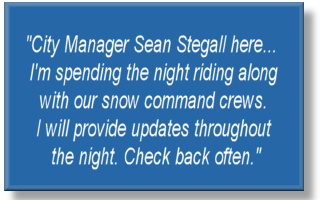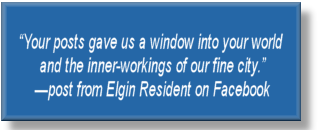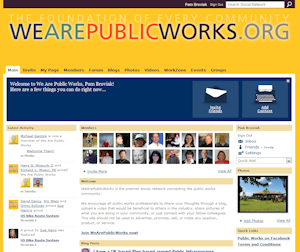Most cities have formal procedures for handling winter storms including a public communications plan to issue press releases and answer phone calls throughout the event. But during the recent winter storm that swept across the U.S., Sean Stegall, city manager for the city of Elgin in Illinois, didn’t quite follow that traditional plan. Instead, from the beginning of the storm, he regularly posted on the city’s Facebook and Twitter accounts about 95 messages about the city’s winter operations. So based on his outstanding example, I have summarized a new plan for communicating to the public during a winter storm. And I would encourage anyone involved in snow and ice control to read through Elgin’s actual Facebook site – it’s well worth the click.
1. Publish the local weather alert and let people know where to get more information. This information should be issued in a press release, posted on the city’s website, and sent out through the city’s social media accounts, automated call services, and e-mail blasts.
Here is Elgin’s post on Facebook:
“The National Weather Service has issued a Blizzard Watch that will remain in effect for the City of Elgin from Tuesday afternoon through Wednesday afternoon. Questions or concerns regarding snow and ice control during the event can be directed to the Public Works Department through the city’s 24 hour Snow Command Center by calling 847-931-5977 or by emailing the Snow Command Center at snowcommand@cityofelgin.org”
2. As more information is received, follow up through the same channels letting people know about special rules in effect  and how services will be impacted.
In Elgin, this included information about their snow plan, trash pickup, parking bans, emergency snow route activation, towing plans, road closures, material to be used for snow and ice control, regular city service closings, locations of warming shelters, reassurance of availability of emergency services, where to access regular updates, and contact information to report concerns over snow and ice control operations.
3. Once the storm hits, post information on social media channels about the snow and ice control operations and give people an idea about how often updates will be provided.
 Stegall began his initial post on Twitter/Facebook by identifying himself and letting people know he would regularly update them throughout the night. The Facebook post ended up with 43 likes and 18 comments, most of which were positive and encouraging. Stegall participated in the dialogue by sharing some information about their operations:
Stegall began his initial post on Twitter/Facebook by identifying himself and letting people know he would regularly update them throughout the night. The Facebook post ended up with 43 likes and 18 comments, most of which were positive and encouraging. Stegall participated in the dialogue by sharing some information about their operations:
“Did you know? According to our mechanics we experience significantly less equipment breakdowns the more snow we have. Why? Because the drivers push so much snow that the plows experience less fatigue, vibrations and run into fewer curbs as they stay in the center lane.” – Sean Stegall
4. Continue regular updates throughout the storm, and include information about equipment, schedules, staffing, status of services such as power, traffic conditions and road closures, weather conditions, emergency service response, and other relevant issues.
Stegall’s posts included photos of staff, equipment, road conditions, emergency conditions, all helping to illustrate and explain the event. The city even had a car fire incident and water main break during the storm.
5. Post snow plow location data if available.
A few times throughout the event, Stegall posted screenshots of the city’s AVL system. This is a GPS enabled method of tracking vehicles allowing people to see where plows are throughout the city.
6. Inform citizens if operations are suspended and let them know when they resume.
At one point during the storm, many agencies, including Elgin, made the decision to pull plows off the streets due to limited visibility. A suspension of operations is important to convey to citizens who might otherwise assume the city is still in snow removal mode. Below is how Elgin handled this announcement on Facebook. The post was followed with positive comments, encouragement, and understanding.
“City Manager Stegall here: We are pulling some snow plows off the road now. It is simply too dangerous. They cannot see due to white out conditions.”
7. Inform citizens of problems and property damage
Unfortunately, mailboxes are a regular casualty in snow removal operations. And in a storm like this, there’s bound to be more than the average number damaged. If an agency is aware of problems caused by their operations, posting this and then following up with information for resolution of the issue is important. Stegall, who was out riding in the plows throughout the storm, witnessed this himself and was up front about sharing the information with residents:
“City Manager Stegall here: I estimate that we have destroyed at least 50 mailboxes. You have my apologies if we did and you will also be reimbursed. The drivers hate it when this happens. They take great pride in their accuracy.”
8. Let residents know as operations near completion. Leave them with contact information and one last update on the status of operations.
Finally on the second day of snow-fighting operations, Stegall signed off with this final post:
“City Manager Stegall here: This will be my last post for awhile. At this point, the operations are humming. Please stay in touch via snow command (847) 931-5977. Thank you for all your support! Sean”



